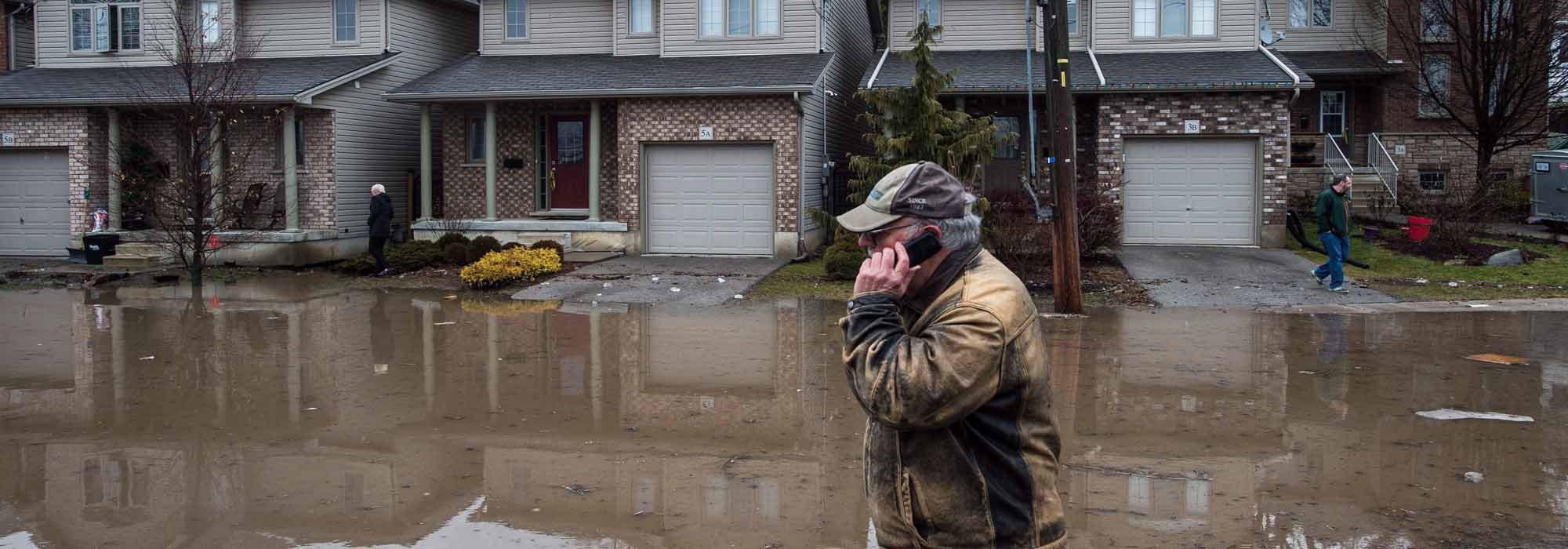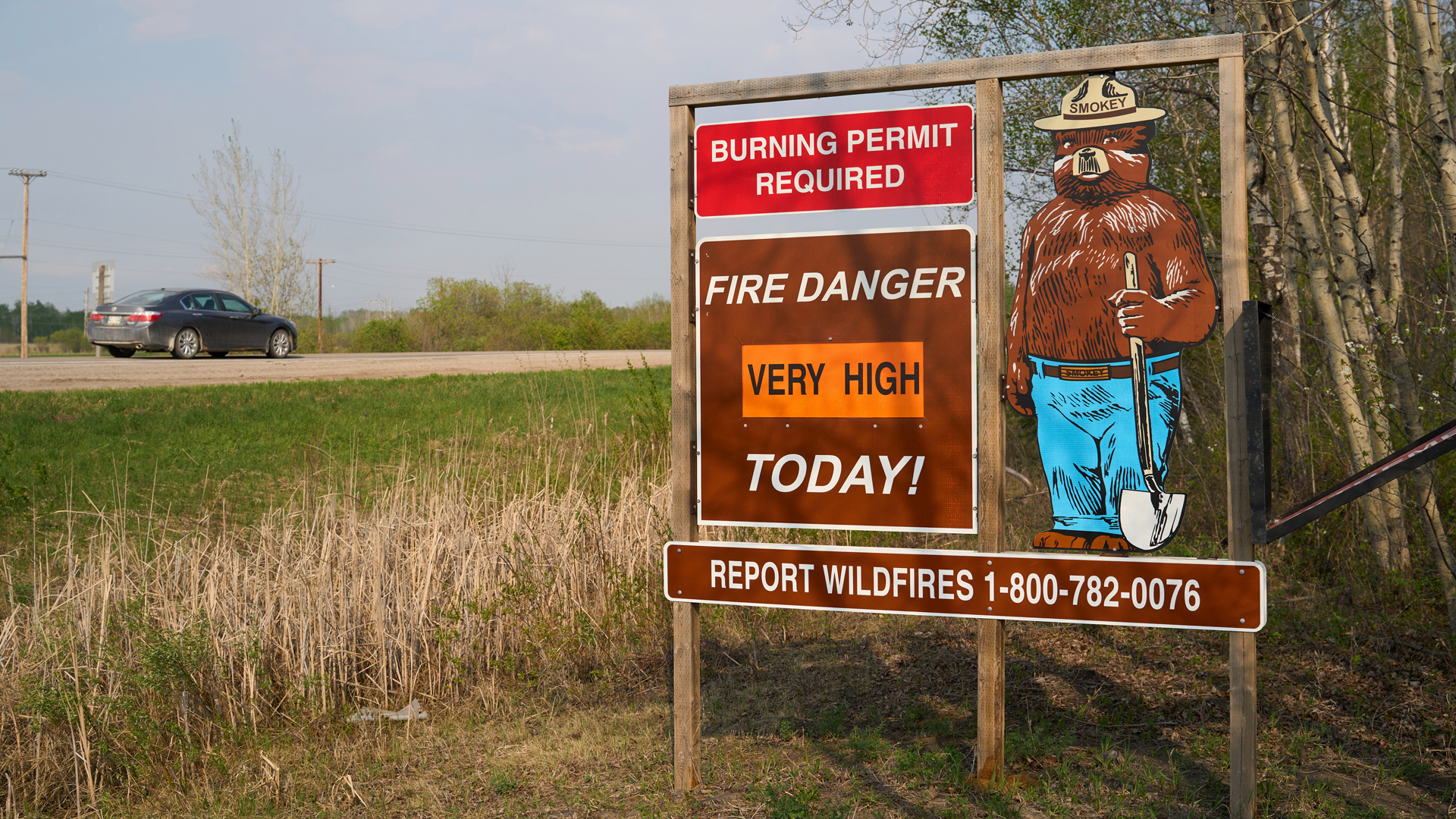
As climate change increasingly triggers severe flooding and forest fires, it is threatening infrastructure and heightening the risk of stranded assets in oil and gas production and distribution worth many billions of dollars.
Managing these risks will be critically important to Canada and globally for decades to come. Other jurisdictions are moving forward with effective regulatory and policy practices. In Canada, innovative public policy and technology will be required to address and manage climate-change risks, and to promote faster adaptation without sacrificing robust economic growth.
A move to a low-carbon economy brings potential opportunities as public and private organizations develop innovative, disruptive technologies.
One clear consequence of climate change is a steady increase in global losses due to extreme weather, notably more frequent and severe overland floods and forest fires. Not surprisingly, government funding and liabilities and insurance claims are rising dramatically. Annual Canadian government spending on floods and recovery has increased to $2 billion in 2013–2014 from around $100 million in 2000. The Parliamentary Budget Office has projected natural-disaster recovery costs to remain high for the federal government, conservatively estimating $900 million annually for the next five years, with nearly $675 million of that coming from floods alone.
Up to 10 percent of Canadians live in high-risk flood zones such as floodplains, urban areas with inadequate storm-water drainage or low-lying coastal areas subject to saltwater inundation. Many have chosen to live in these areas based on inadequate historical information. Mapping of flood risk in Canada is improving with more sophisticated technology, but risk mapping and flood-risk information are not managed or distributed under an integrated system.
A second source of rising costs from climate change is spending to ensure buildings, roads and culverts, bridges, dams, levees, sewers and drainage systems can withstand more extreme weather. New infrastructure projects will need to be better designed and built to deal with torrential rainfall, heavy snowfall, high winds, wildfires and wild temperature swings that can cause ice storms.
Direct financing from a combination of federal, provincial and local governments is generally the first funding option for infrastructure. Yet Canadian governments have systematically under-invested in public infrastructure for decades. The Canada Infrastructure Report Card for 2016 estimates a replacement value of $141 billion for assets in poor or very poor condition. Funding is now being put in place to address this public-infrastructure deficit and to ensure it can handle the impacts of climate change.
Newly built and retrofitted infrastructure can also help reduce future greenhouse-gas emissions by using low- or lower-carbon energy sources, and by making design and operational choices that help minimize emissions. Expansion of public transit powered by low-carbon electricity – buses, streetcars, light rail, intercity rail – is an obvious example.
A third area of impact is the growing risk of stranded assets and unproductive investments that could undermine confidence in our financial institutions and system. The ground is shifting on what is seen as a sustainable investment. As a result, regulatory and market oversight is being examined in detail. Enhanced disclosure of climate-related risks and opportunities would enable investors to make more informed decisions about an investment’s potential for long-term success.
The federal government created a Canadian expert panel on sustainable finance to explore the opportunities for sustainable finance and the role of the financial sector in supporting the clean- growth agenda in Canada. Defining Canadian policy on the standards for business transparency is particularly important for financial institutions that provide the capital for energy development. It is also important for firms and projects with high greenhouse-gas emission intensity, such as in the energy sector, key energy services like energy transmission and sectors like petrochemicals and cement.
What specific ends could be reached through the development and procurement of conventional and disruptive technologies? Recent research by the Canadian Academy of Engineering, presented in the Trottier Energy Futures Project, indicates that wide deployment of existing and known emerging technologies could allow Canada to achieve its commitments under the Paris Agreement. This would require massive private investment over several decades, likely trillions of dollars. Profound changes to how we produce and consume energy will be required, guided by policies that encourage individuals, businesses and governments to purchase and use these technologies.
Disruptive technology can be a two-edged sword. It creates economic and social losers as well as winners, and the net impact on society is not always obviously positive. Regulatory frameworks will need to evolve quickly if we are to greatly benefit from disruptive technology and minimize adjustment costs.
In addition, the development of disruptive technologies is not a panacea. The political will to take near-term action should not be undermined by the promise of technologies to redress climate change and mitigate related damage.
A combination of creative public policy and technological innovation is needed to address the consequences of climate change and promote the transition toward a lower-carbon economy. The transition has already begun with:
- public investment in more robust infrastructure;
- robust financial regulatory oversight to prevent the stranding of assets;
- the development of technologies that reduce greenhouse-gas emissions;
- policies to promote public and private procurement in these technologies and their sale internationally.
Complementary smart regulations in areas where prices alone will not produce significant change are also being developed. For example, greenhouse-gas emissions from methane or the agricultural sector could be technically and practically difficult to price. Well-designed regulations could be effective in achieving reductions in these areas.
Finally, Canada has begun introducing carbon pricing and revenue recycling. The Ecofiscal Commission (of which I am a member) has suggested pricing carbon initially at a modest level, such as $20 a tonne, increasing the price steadily over time. There is no consensus among economists on the optimal price for carbon, but a target price of $75 to $100 a tonne would provide a clear signal to consumers and businesses to modify their behavior. There are many options for recycling revenue from carbon pricing. Returning the revenue to taxpayers as a dividend could help build wider public support.
A good start has been made with many of these structural policies. But a significant minority of Canadians remains unconvinced of the reality of climate change and its negative impact. As the policy framework advances, the focus should be on completing and implementing these transitions and on increasing investment in promising technology areas.
Policy should also focus on ways to build public support, which will be as important as the technologies themselves.
This article is adapted from Canada Next: 12 Ways to Get Ahead of Disruption, a Public Policy Forum series of 12 papers on disruptive challenges and opportunities facing Canada.
This article is part of the Nimble Policy-Making for a Canada in Flux special feature.
Photo: Brantford, Ont., residents were being evacuated due to flooding along the Grand River after an ice jam upstream of Parkhill Dam sent a surge of water downstream on Wednesday, February 21, 2018. THE CANADIAN PRESS/Aaron Vincent Elkaim
Do you have something to say about the article you just read? Be part of the Policy Options discussion, and send in your own submission. Here is a link on how to do it. | Souhaitez-vous réagir à cet article ? Joignez-vous aux débats d’Options politiques et soumettez-nous votre texte en suivant ces directives.








